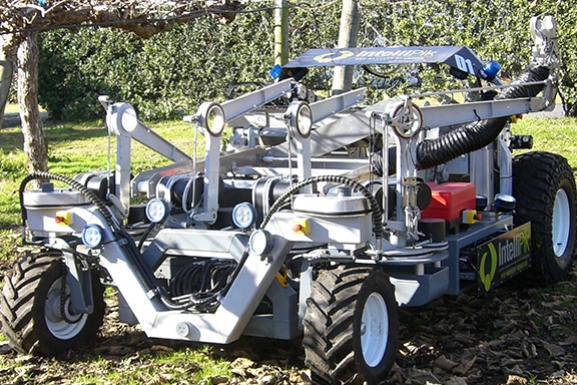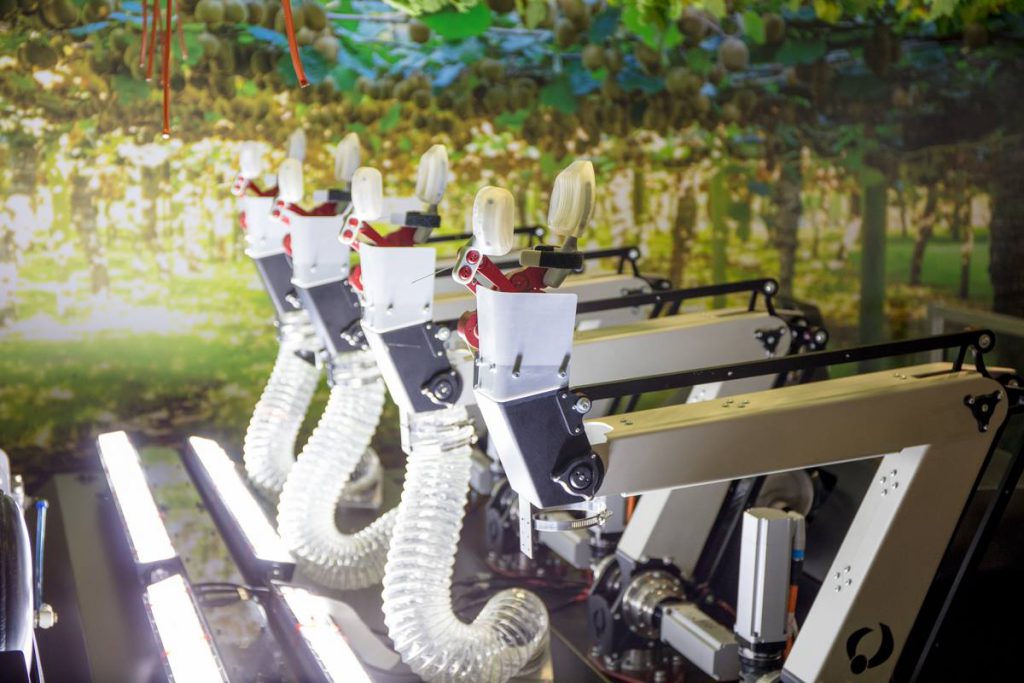Last night I attended a University of Waikato lecture entitled “Robotics in primary industries – the revolution begins!” presented by Professor Mike Duke.

It was fascinating!
Here are my notes on the talk:
—
The Goal
The NZ Ministry for Primary Industries (MPI) has set the goal of doubling primary industry exports by 2025.
7 Key Challenges Slowing Growth In The Primary Industry
- Labour shortage
- Very difficult to find locals interested in low-skill work so having to bring in immigrants
- Labour cost
- Often have to pay agencies to source workers which adds to labour cost
- Labour legislation
- Rules and regulations around working hours, conditions etc
- Quality control
- Work often needs to be checked 2 or 3 times, lots of wastage, lack of care
- Labour reliability
- Workers often don’t turn up
- Health and Safety
- Increasing burden for compliance
- Obsolete machinery
- Produces lower quality results
Can Robotics and Smart Automation Help Solve Some of these Issues?
A major component of primary industries is grading. Grading fruit for blemishes, grading seedlings for suitability.
“Grading is not good use of human brainpower”.
We’ve been using robots in factories for years (eg the vehicle manufacturing industry)
But how do we move robots from factories to the fields?
Some of the challenges unique to outdoor robots dealing with plants:
- Zero light control: Night and day, and dappled light in overhead canopies is problematic for light sensors and cameras
- Rain
- Huge variation in foliage structure
- Slopping ground, difficult terrain
4 Examples of Primary Industry Robots
Here are 4 examples of robots built, or in development, by the university and it’s partners.
Robotic Example #1: The robot that punches precision holes for seedlings
The problem:
- In a nursery, an antiquated machine with a spiked wheel was being used to punch holes in the soil
- The problem is that the spike makes a ragged hole, and when the seedling starts to grow it adapts to the shape of the whole and often grows crooked
The robotic solution:
- The team created a robot that rolls along and punches precision holes
The result:
- The robot (based in Tokoroa), has created 20 million precision holes in the last 4 years
Robotic Example #2: The robot that picks and grades seedlings
The problem:
- Once the seedlings are ready for picking and sending to the clients, the process is tedious, and time consuming
The robotic solution:
- The team created a robot that rolls along and picks out the seedlings, knocks off the dirt, trims off some of the longer roots, and passes the roots under a camera to assess it’s quality and suitability for the client, and packs the seedling into a box
The result:
- The robot can lift 100,000 trees a day
Robotic Example #3: The robot that hunts down Asparagus stalks
The problem:
- Asparagus is only ready to be picked when it has reached a certain height
- The fields are large and would require 100’s of kilometres of walking per day for a single person so often need teams of dozens or up to 80 people
- Picking asparagus is a back-breaking job that harvests one stalk at a time
The robotic solution:
- The team is working on a robot that uses LIDAR to detect asparagus in the field that has reached the right height, navigate to these stalks, cut them and place them in a tray
- 10 robots like this could move around night and day
Robotic Example #4: The robot that picks Kiwifruit and pollinates flowers
The problem:
- Harvesting kiwifruit is time sensitive and labour intensive. It’s hard work reaching up into the canopy
- Bee’s don’t like kiwifruit flowers much so they often need to be pollinated by hand with a spray bottle of very expensive pollen
The robotic solution:
- The team has developed a robot car with a platform that can host a wide range of robotic devices on top of it
- One such robotic device is a system of 4 robot arms that can pick a kiwifruit every second
- Another such robotic device is a pollination machine that can pollinate 20,000 flowers in a single row of kiwifruit in a few minutes


Additional applications include:
- The identification, and targeted eradication, of individual pest insects
- The pollination of just the flowers that the harvesting robot can reach easily in a few months (instead of 20% of the crop being out of reach for the harvesting robot)
- Counting pests or diseases (stink bugs, murtle rust) and tag their location or eradicate them
- The identification and eradication of individual weeds
A New Export For New Zealand
Exporting our produce is one thing, but exporting robots like these is a whole new service category for New Zealand.
Watch The Presentation Yourself
You can watch the 45 minute presentation yourself on YouTube, which was recorded a few weeks earlier for a different audience but with almost identical content:
Your Thoughts?
Do you think the goal is achievable with the help of robots like these?
Are we doing enough to prepare our children for working in industries like these in the near future?
Have your say in the comments section below.
